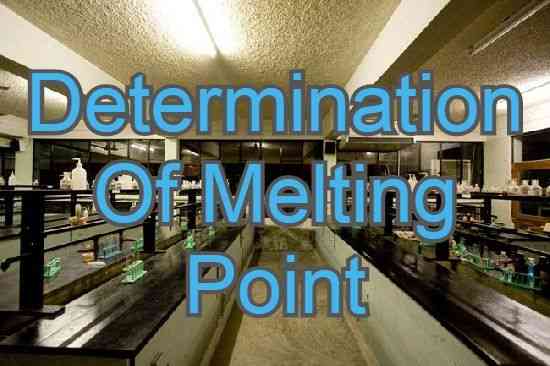The real fun of chemistry is in its lab experiments. I myself love chemistry most for its real life practical experience. I’ve decided to create an article series of lab chemistry experiments that I have been learning so far. As far as my educational background is concerned, it will help us to learn and enjoy all these experiments together throughout the series. Each experiment writing will come up with these points as below :
- Name of Experiment
- Theory
- Materials
- Procedures
- Discussion
So let’s just start off with organic chemistry. The experiment I’m sharing with you today is the most basic one and I’ve learned it from my real life experience through university lab classes.
Name of Experiment : Determination of melting point of organic compound.
Theory :
First question is what is melting point? The temperature range at which a crystalline solid changes into a liquid under an external pressure of one atmosphere is defined as the melting point. A small amount of sample is slowly heated to obtain the melting point. Usually a small tube is used for observing a sample carefully and the liquid is first observed at which temperature is noted down. When the entire solid is liquefied, that temperature is noted as well. Typically, a small range of temperature will lead to a sample melt over. Thus the temperature at which the liquid is first observed and the solid is totally liquefied is referred to as melting pointing range. Most pure samples melt over a very small (5 degree) range.These probably have soluble impurities which depress the melting point. Hence, the melting point range of a compound can be an indication of purity.
Materials :
- Thermometer
- Hot plate
- Burner
- Small test tube
- 250 ml beaker
- Closed capillary tube
- Organic compound
- Liquid
Procedures :
- Firstly, we need to place a few milliliters of a known solid organic compound in a small test tube.
- Place the capillary tube with closed and upward.
- Clamp the test tube in a stand and immerse a thermometer in the test tube.
- Fill a 250 ml beaker ¾ full water or paraffin and place on the hot plate. Then lower the test tube and thermometer combination into the beaker of water. So that the test tube is immersed halfway in the water.
- Start to heat the hot plate or water slowly. Watch it carefully at which temperatures it begins melting and at which it ends. Mark that down.
In my lab experiment regarding this, I’ve used “Benzamide” and “Benzoic acid" as organic compounds. The melting points of benzamide and benzoic acid are respectively 127-130 degree C and 121-123 degree C. [1] And the result I obtained in practice was widely recognized.
Discussion :
In case of pure substance, the beginning of melting can be observed with some certainty. For an impure substance, the beginning of the melting process will vary depending on the nature of the impurities. Therefore, every pure compound has a certain number of ranges for melting. So we can say the melting point actually denotes the temperature range at which the substance has just completely melted. The presence of impure substance can be deduced from the lowering of melting point value.
References :
[1] Wikipedia & Sigmaaldrich


